We’ll be taking a look at the Hoya Macrophylla in this post today. It is another one of the beautiful dark green, waxy leaved hoyas that give a stunning appearance to any plant collection. Let’s see what information we can gather as we take a look!
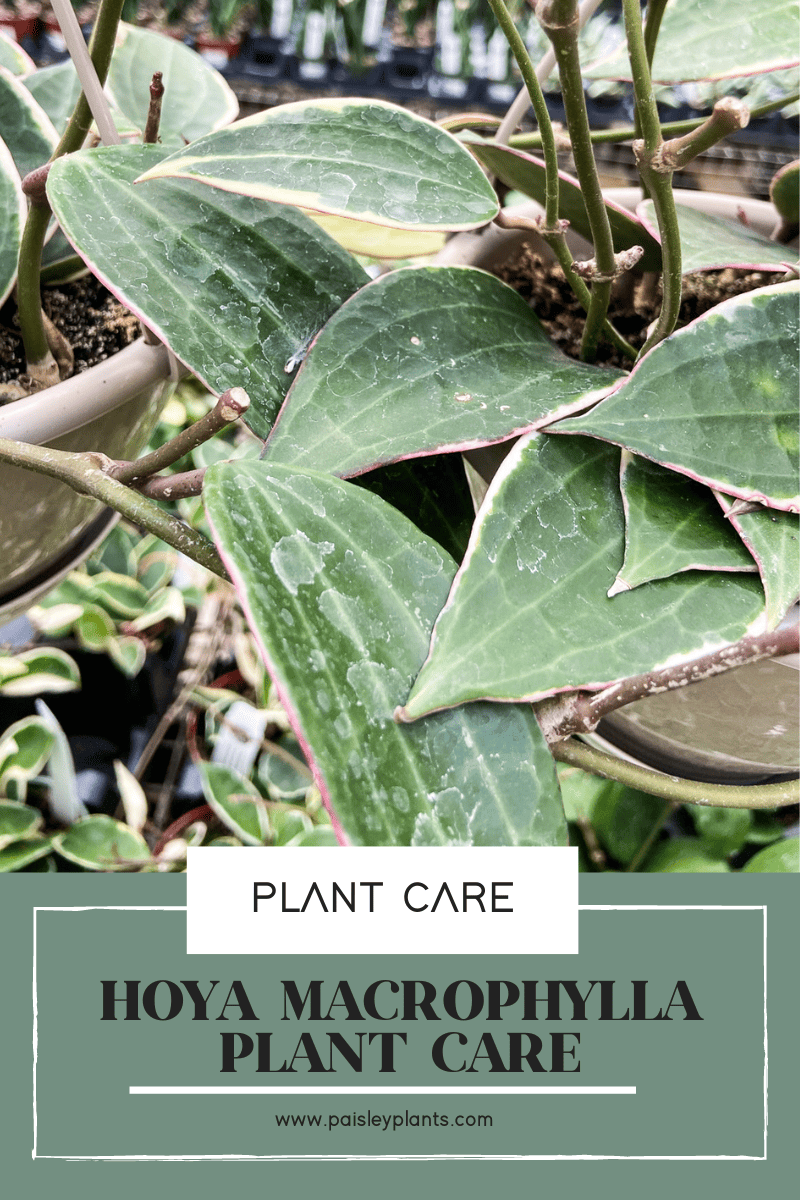
Table of Contents
Hoya Macrophylla Background and History
The first thing to know is that the name for this plant means “large leaved.” It has characteristic noticeable veins that run throughout the leaves also. They are natives of Borneo in the South Pacific. They were first described in 1827 and since then, have become an extremely popular houseplant.
There are a few common names for the Hoya Macrophylla plant. They are a Wax Plant, Wax Vine, Wax Flower or Honey Plant.
Toxicity
This plant is not considered toxic to either small children or pets. However, the sap could cause some skin irritation to the sensitive skin of small children, so take care to keep it out of their reach. Also, if ingested, it could be a choking hazard. The same could be true for a pet if large quantities of the waxy leaves or foliage are ingested.
Be on the safe side and keep these plants in a high place so they are out of reach of both your small children and pets. You can also teach your children that plants are pretty, but not something to play with!
Hoya Macrophylla Care Tips
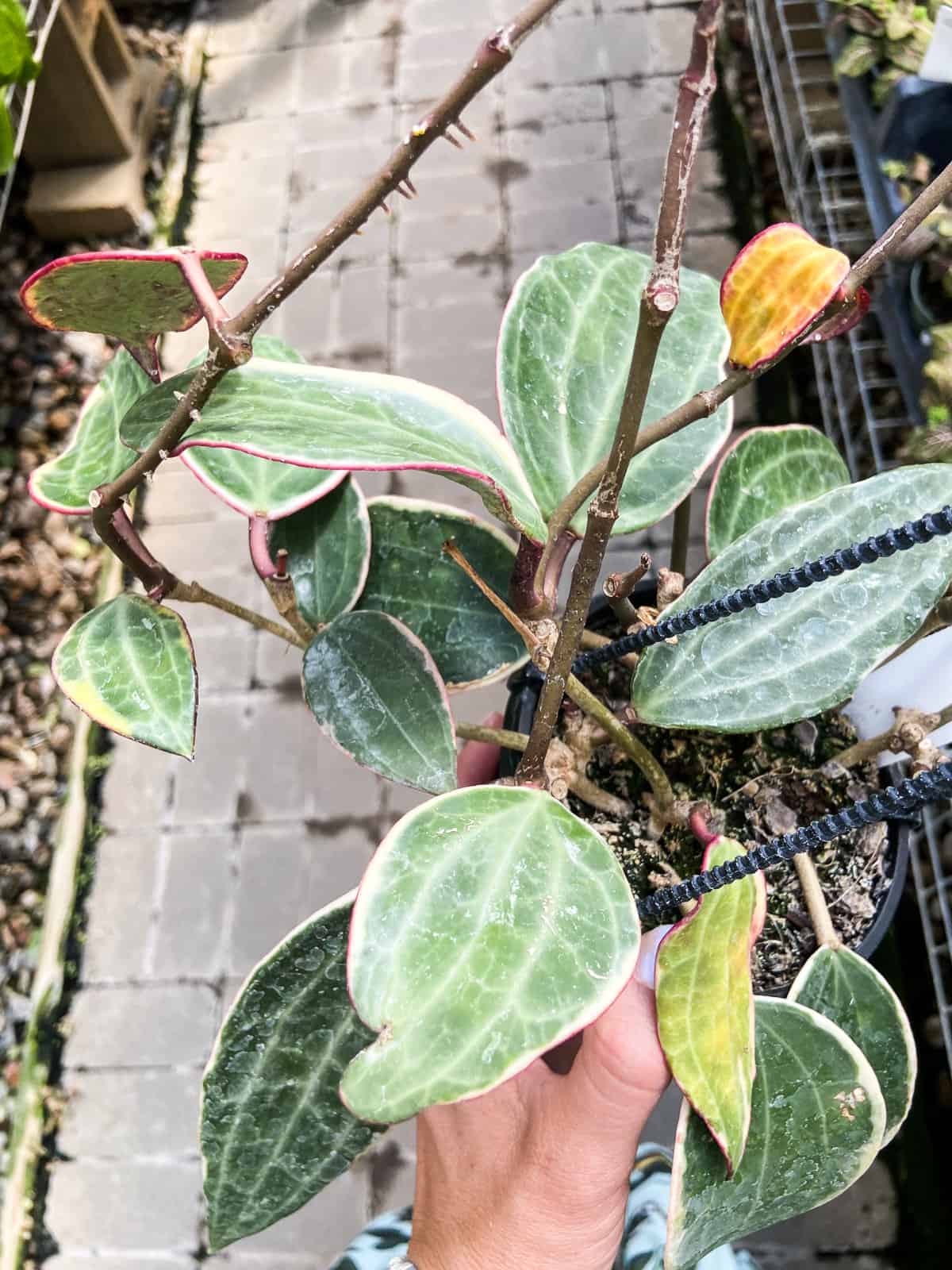
Water Requirements
One of the best things about your Hoya Macrophylla is that it isn’t a diva when it comes to watering! It only needs to be watered when the soil is completely dried out. You can test this by using your finger or even a water meter in the soil. Be sure to keep a regular watering schedule even though you will be able to let your plant totally dry out without harm.
Light Requirements
Your Hoya Macrophylla likes lots of bright, indirect sunlight. Placing it in a south facing window is a good spot for it. You will want to be sure it does not get hot in the afternoon sun, especially through a window as the glass can intensify the heat from the sunlight.
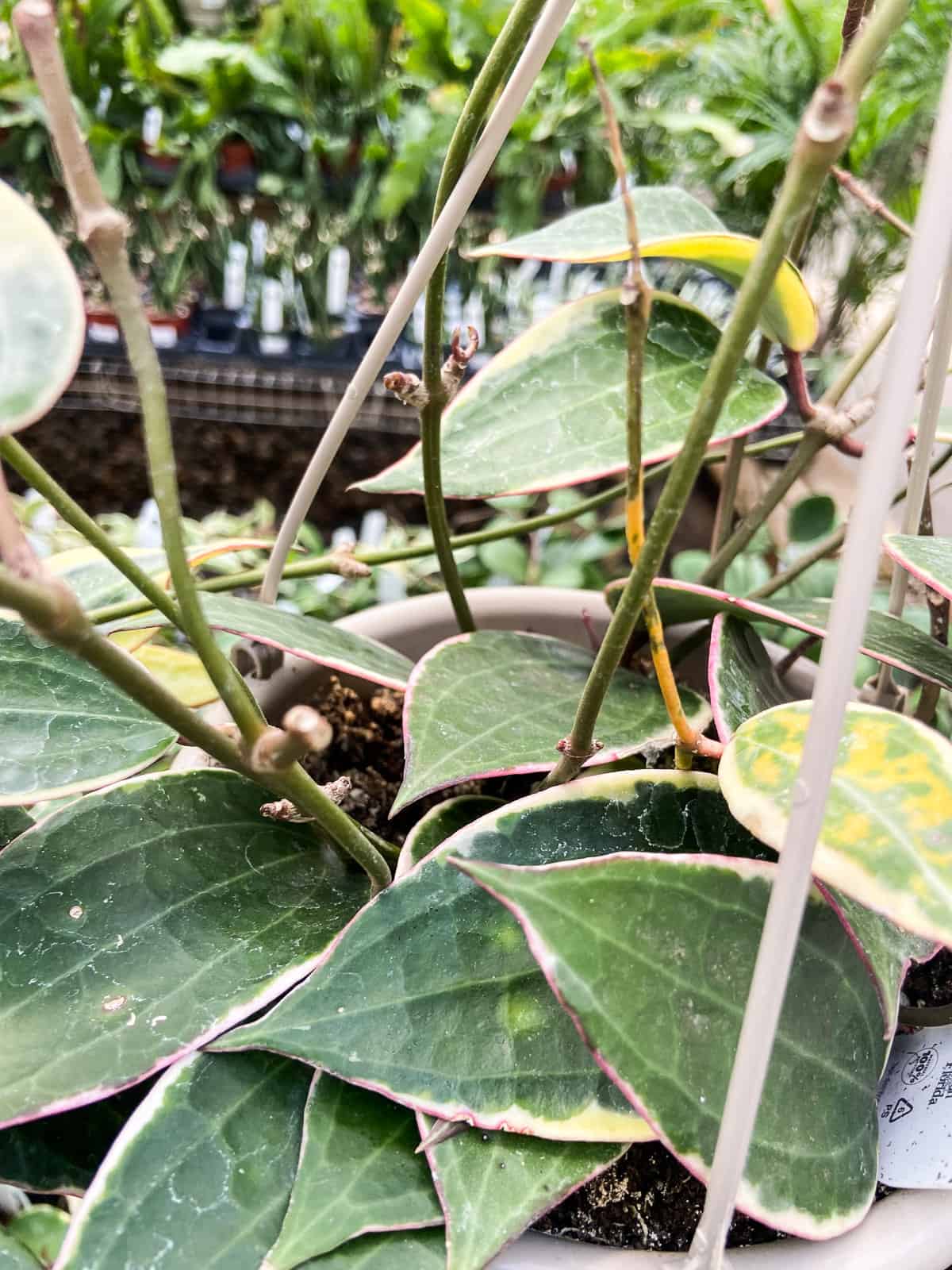
Soil Requirements
Use a well balanced soil mix that has peat moss, perlite and vermiculite for your Hoya Macrophylla. This mix should be loose and non-compacting and one that allows the mix to dry out between waterings. You can add the above ingredients to a normal potting soil and it should work fine also.
Fertilizer Requirements
The ideal time to fertilize your Hoya Macrophylla plant is during its growing season, which is the spring and summer. This only needs to be done once a month. During the fall and winter time, which is considered the dormant period for your plant, fertilizing is not really necessary.
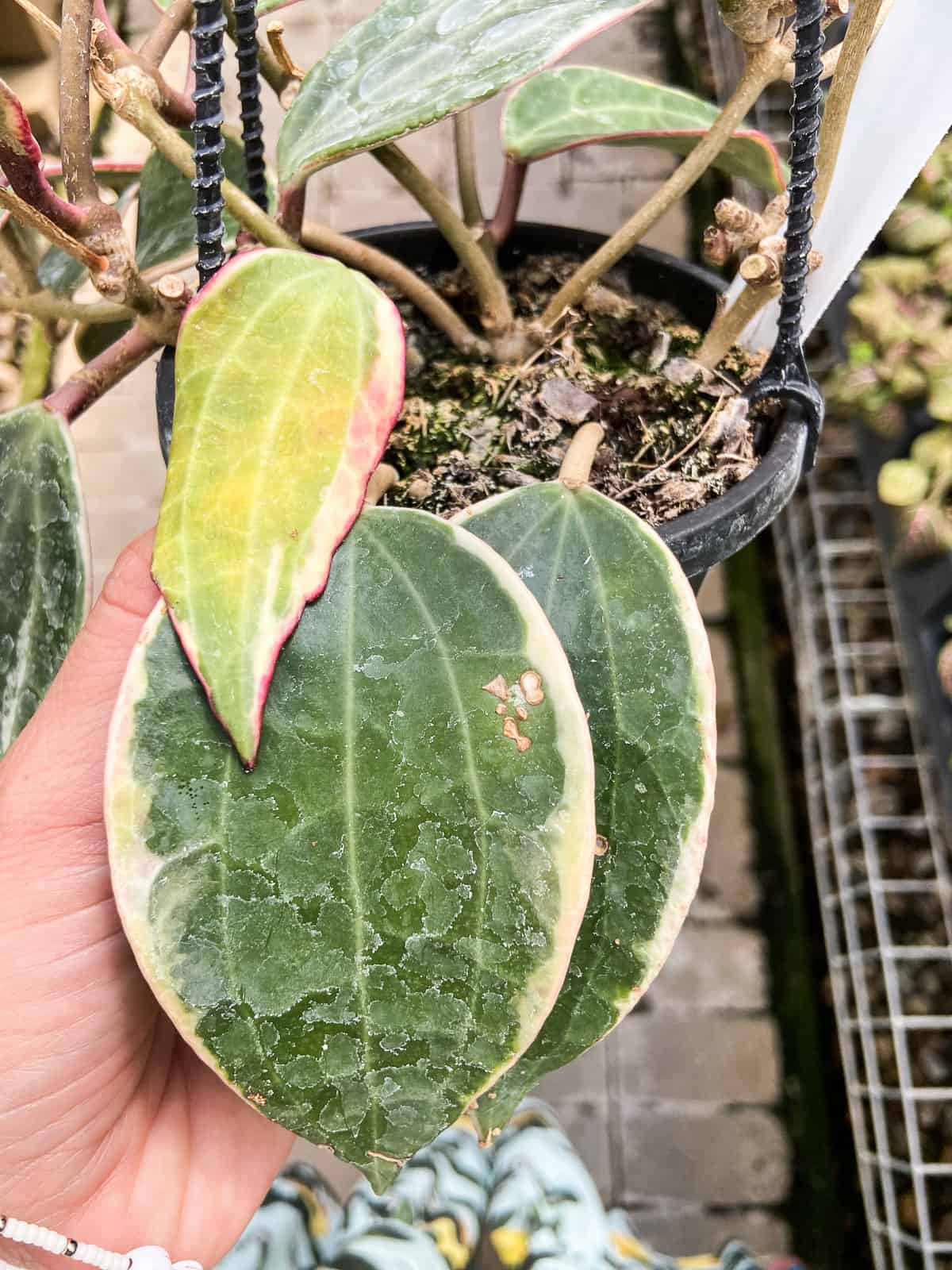
Temperature and Humidity
Because the Hoya Macrophylla is native to Borneo, it enjoys being in a warm, humid environment. This would mean the temps should be kept between 65 and 80 degrees F. If you allow the temperature to drop anywhere below that, your plant might go dormant.
You should keep your plant in a nice bright place when it is in its dormant period, but be sure to keep the temperatures even. Also remember to keep it away from heat vents or drafty doorways to prevent sudden temperature changes.
If you have a room that has higher humidity than others, your Hoya can benefit from those conditions. You could also keep a humidifier in the room, but be careful not to overwater or spray the leaves directly as this can cause leaf damage. You also want to prevent fungi in the soil, so don’t go overboard with the moisture!
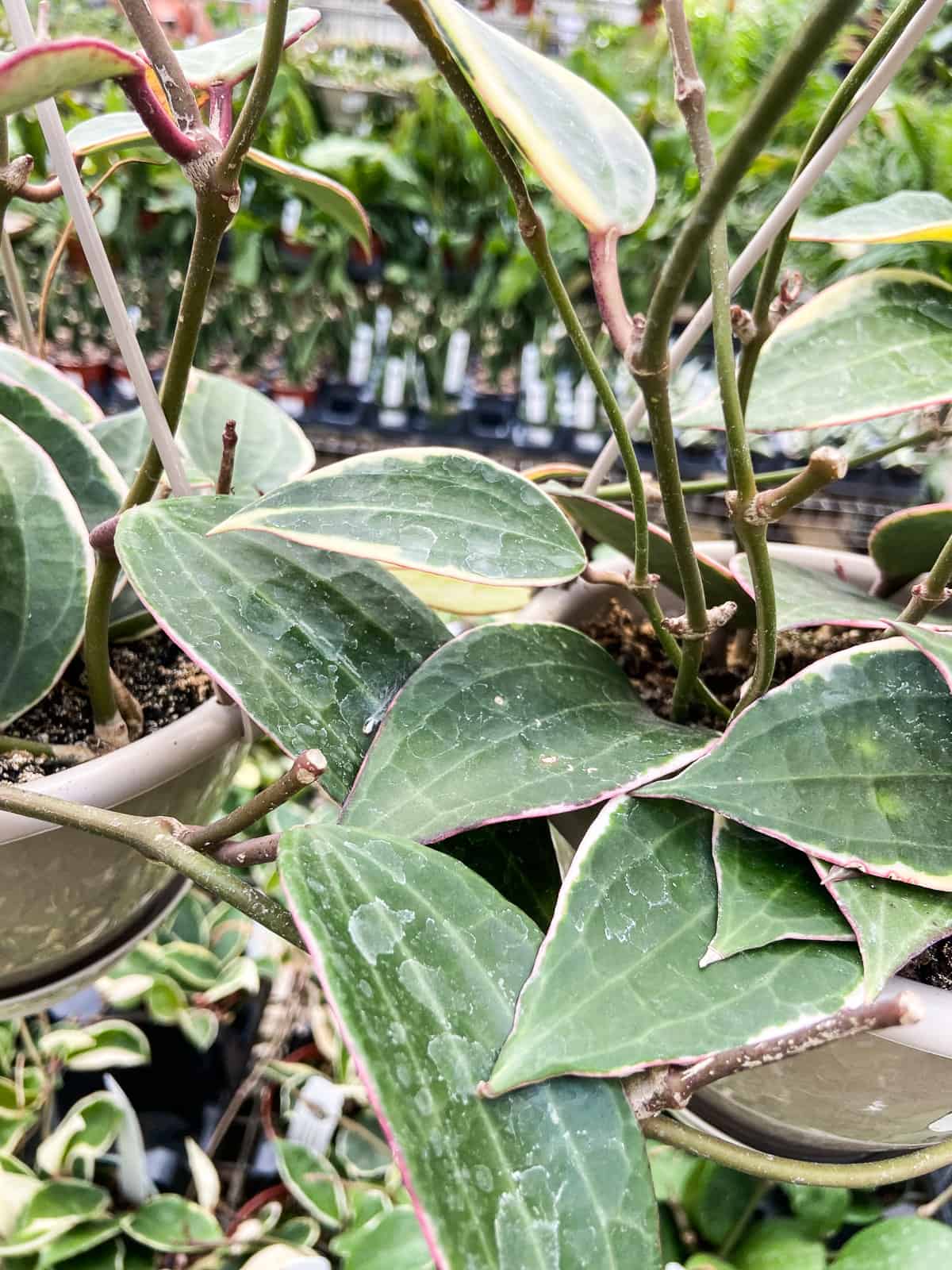
Pests and Diseases
Aphids and mealybugs are the most common pests for the Hoya Macrophylla. If you discover aphids on your plant, isolate it from other plants as soon as possible. You can then remove the aphids by spraying water on them. Keep checking your plant to be sure all the aphids are gone before returning it back to your original collection.
If you find mealybugs, you can treat them by using alcohol on a cotton swab or cotton ball to remove them. This may take a bit longer, but will be worth the time spent once they are removed. Again, don’t put your plant back with the others in your collection until you are sure the mealybugs are eliminated.
You also might find fungal leaf spots on your plant. If this happens, you will need to treat it with neem oil on a cotton swab or soft cloth. Be sure to cover the entire leaf both on top and bottom where the fungus is likely to be present. Allow the oil to penetrate the leaves for several hours before rinsing with clean water.
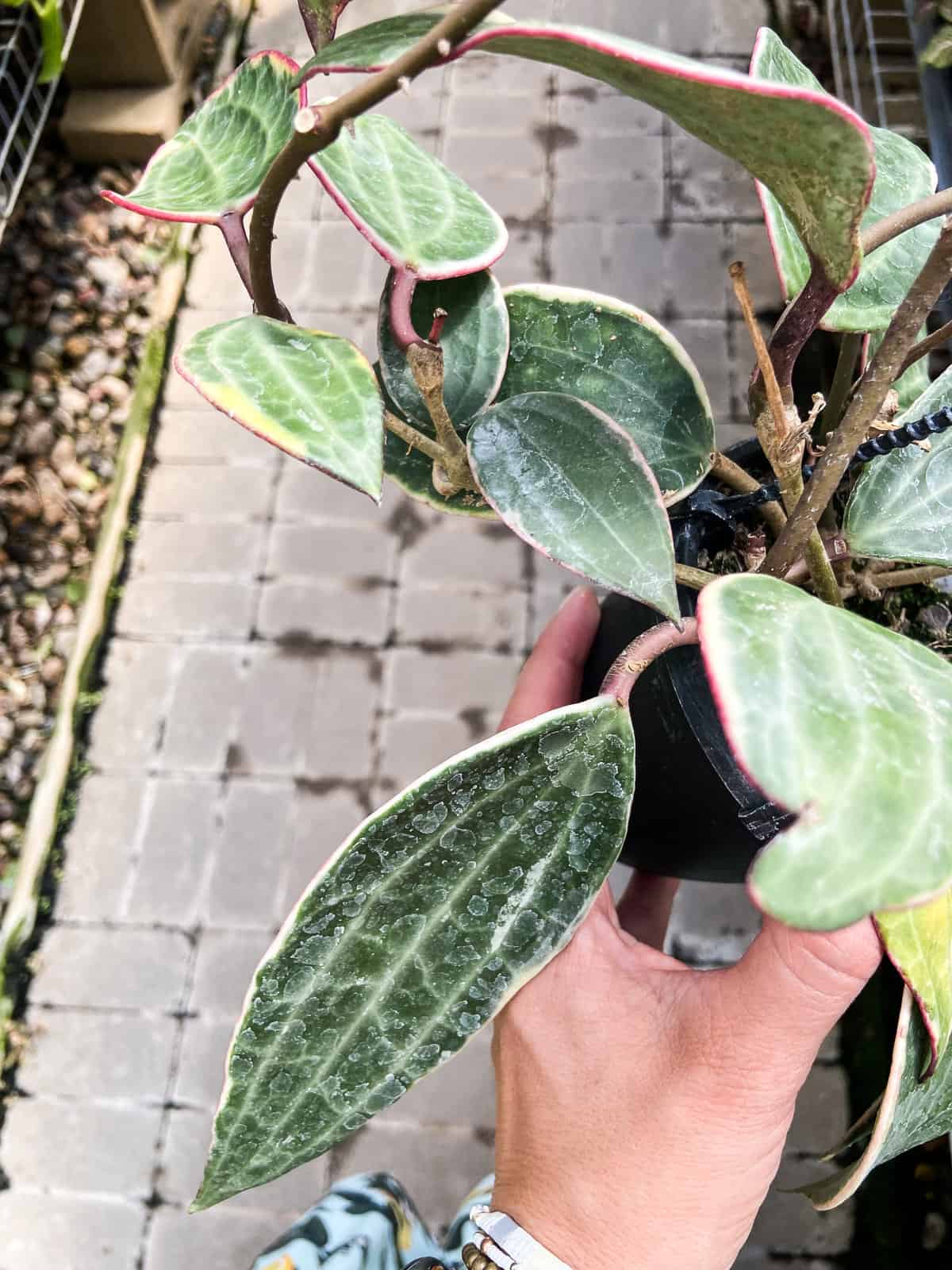
Pruning and Repotting
As with any plant, you will always want to remove all dead, dying or diseased foliage. This will help to keep your plant healthy and beautiful. As far as pruning goes, this plant is a slow grower and won’t need much pruning, unless you want to control its size and keep it really compact.
A few days before you decide to repot your Hoya, you will want to water it. This can help to not stress it when you do report it. Give the pot a squeeze before you pull the plant from the soil to loosen it up a bit. Then be sure to shake off the old soil and use new soil so it regains the nutrients that have already leached out of the old soil. Use a pot that is at least one to two inches larger than the current one.
Common Problems
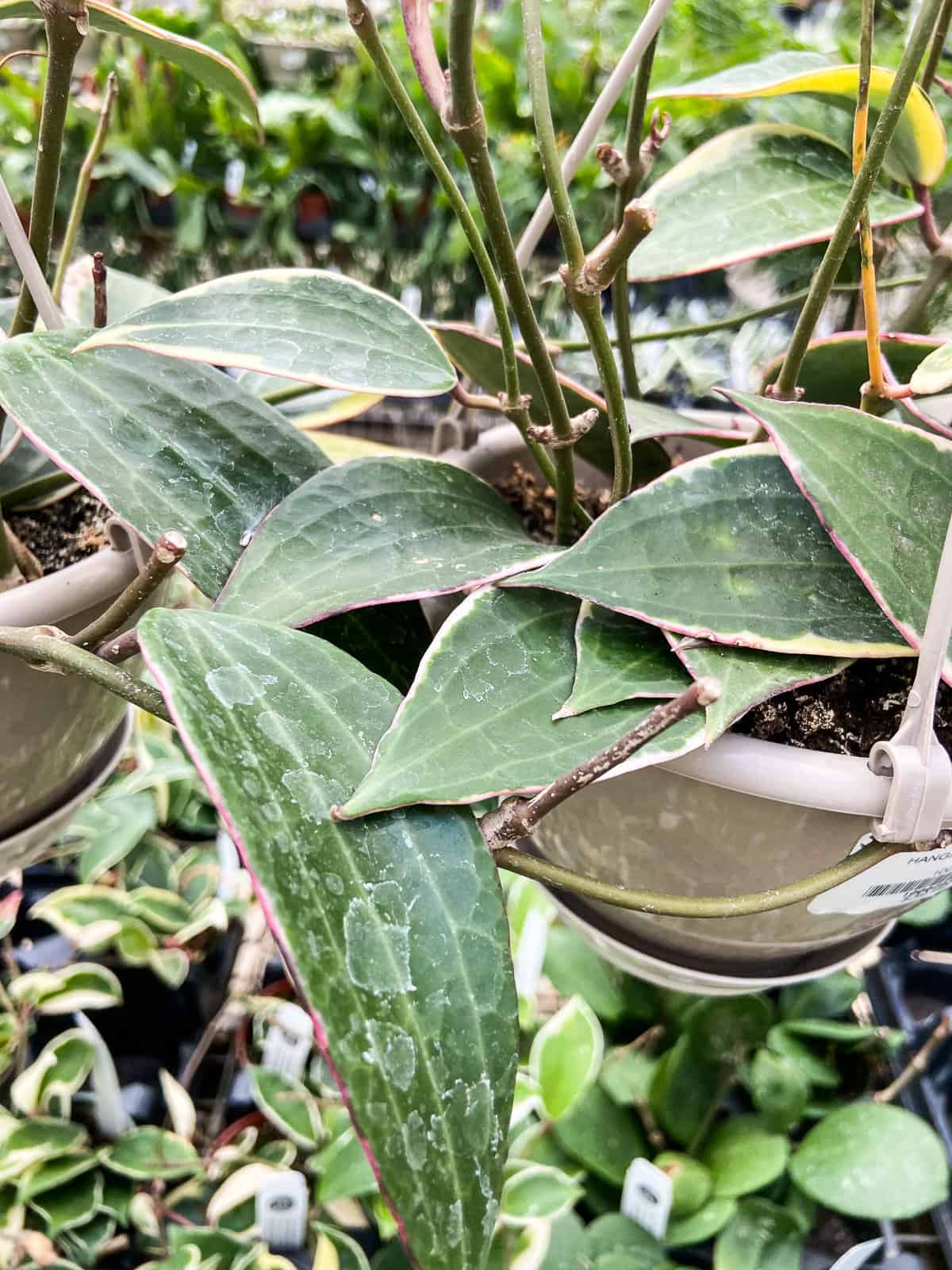
Soft, Mushy Leaves
If the leaves on your Hoya Macrophylla feel like a damp sponge, it is most likely due to overwatering. Check the soil by sticking your finger into it and see how dry it is. If it is really wet, this means the roots are not getting enough oxygen and may soon rot. Back off on the watering, so your plant can grow properly. You may have to repot it if the roots are already damaged.
Dropping Leaves
If your plant starts dropping leaves, you need to figure out the problem right away! While it is true that older leaves do drop over time, if the newer ones begin to drop a lot, you need to investigate to see if it is due to over or under watering, lack of light, or a humidity or temperature problem.
You will need to check out which of these are the problem. You will have to check each of them out one at a time. If the soil is too wet, you are overwatering. If the soil is too dry, you are underwatering.
Brown or Yellowing Leaves
If the leaves are turning yellow, it may be due to lack of light. If your leaves are turning brown, it may be due to lack of proper humidity levels. It can also be from having your plant in the wrong temperature. Once you figure out the problem, it should solve the problem of leaf drop.
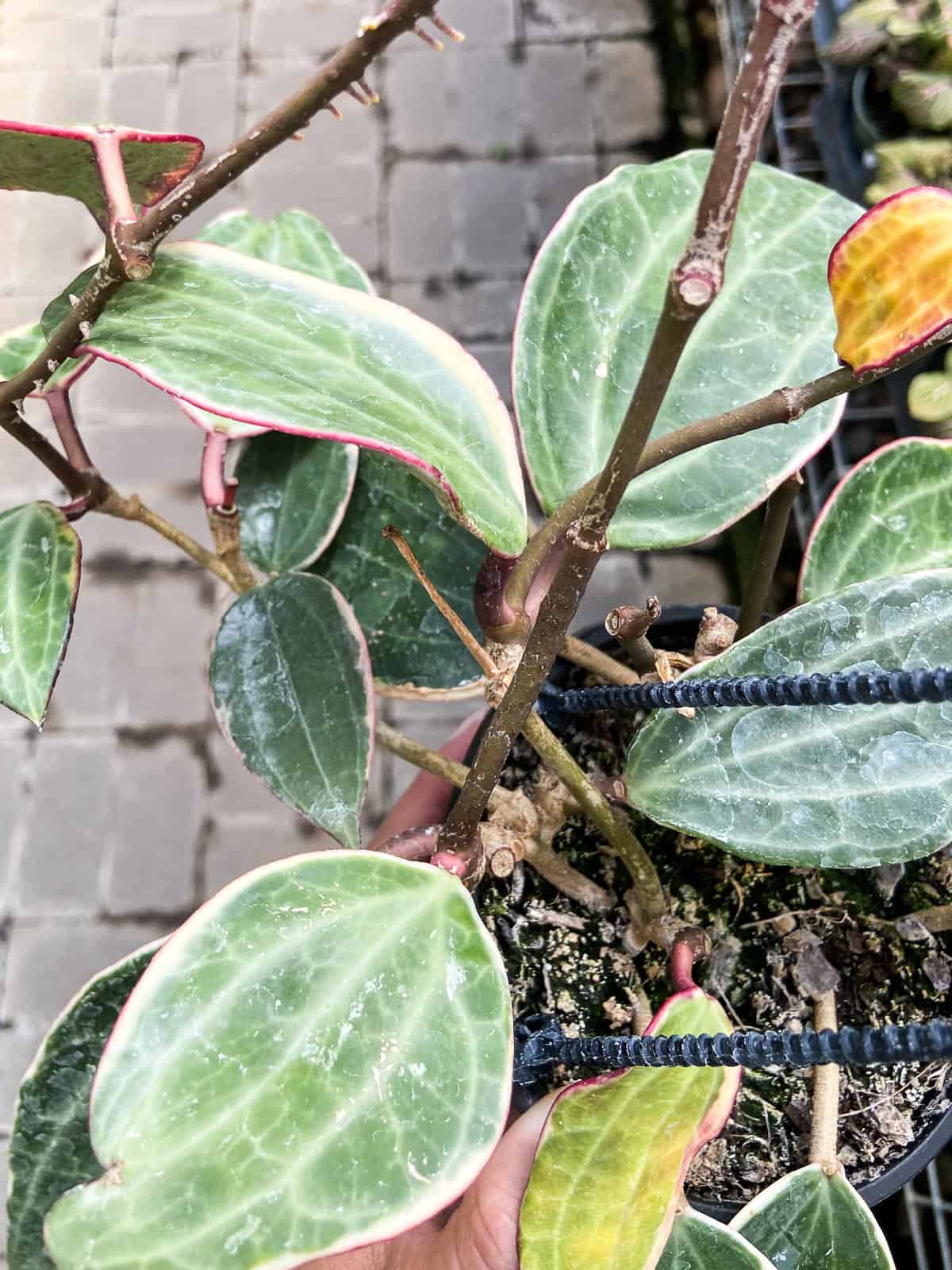
FAQs
Yes. Hoyas don’t have deep roots, so a shallow container will work fine. You should choose a container that is only slightly larger than the plant root ball. Of course, you can use a deeper pot or hanging basket if you wish.
Fortunately, you can use any plastic, terra cotta, or ceramic pot to grow your Hoya Macrophylla in. There isn’t really one type of pot that is better than the other. Once the roots replace most of the soil and it becomes rootbound, it is a good time to repot your plant.
Overall, this type of plant is considered a slow grower. You may only see new leaves every few months on your plant. It can take years for it to reach its maximum indoor length of six feet. It may never flower when grown indoors, so don’t be too upset if it doesn’t! This is normal!
In Conclusion
I’ve never been to Borneo, but when I think of all the lush foliage and plants that grow in tropical regions, I can only imagine seeing a Hoya Macrophylla growing there! If you have a sunroom or a place you could grow a nice tropical plant, this could be a good place to start. As always, keep on growing!
